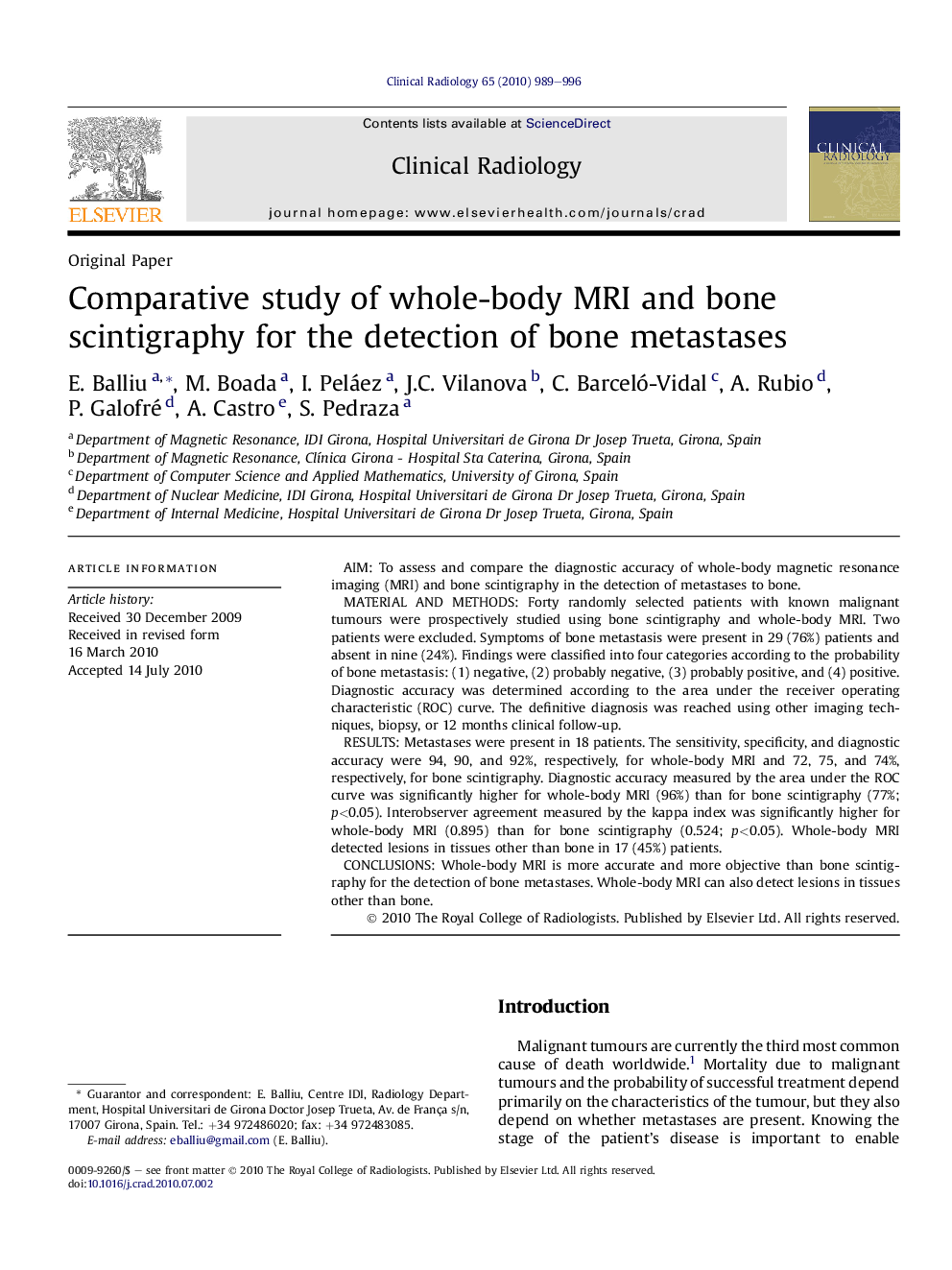| Article ID | Journal | Published Year | Pages | File Type |
|---|---|---|---|---|
| 3982299 | Clinical Radiology | 2010 | 8 Pages |
AimTo assess and compare the diagnostic accuracy of whole-body magnetic resonance imaging (MRI) and bone scintigraphy in the detection of metastases to bone.Material and methodsForty randomly selected patients with known malignant tumours were prospectively studied using bone scintigraphy and whole-body MRI. Two patients were excluded. Symptoms of bone metastasis were present in 29 (76%) patients and absent in nine (24%). Findings were classified into four categories according to the probability of bone metastasis: (1) negative, (2) probably negative, (3) probably positive, and (4) positive. Diagnostic accuracy was determined according to the area under the receiver operating characteristic (ROC) curve. The definitive diagnosis was reached using other imaging techniques, biopsy, or 12 months clinical follow-up.ResultsMetastases were present in 18 patients. The sensitivity, specificity, and diagnostic accuracy were 94, 90, and 92%, respectively, for whole-body MRI and 72, 75, and 74%, respectively, for bone scintigraphy. Diagnostic accuracy measured by the area under the ROC curve was significantly higher for whole-body MRI (96%) than for bone scintigraphy (77%; p<0.05). Interobserver agreement measured by the kappa index was significantly higher for whole-body MRI (0.895) than for bone scintigraphy (0.524; p<0.05). Whole-body MRI detected lesions in tissues other than bone in 17 (45%) patients.ConclusionsWhole-body MRI is more accurate and more objective than bone scintigraphy for the detection of bone metastases. Whole-body MRI can also detect lesions in tissues other than bone.
